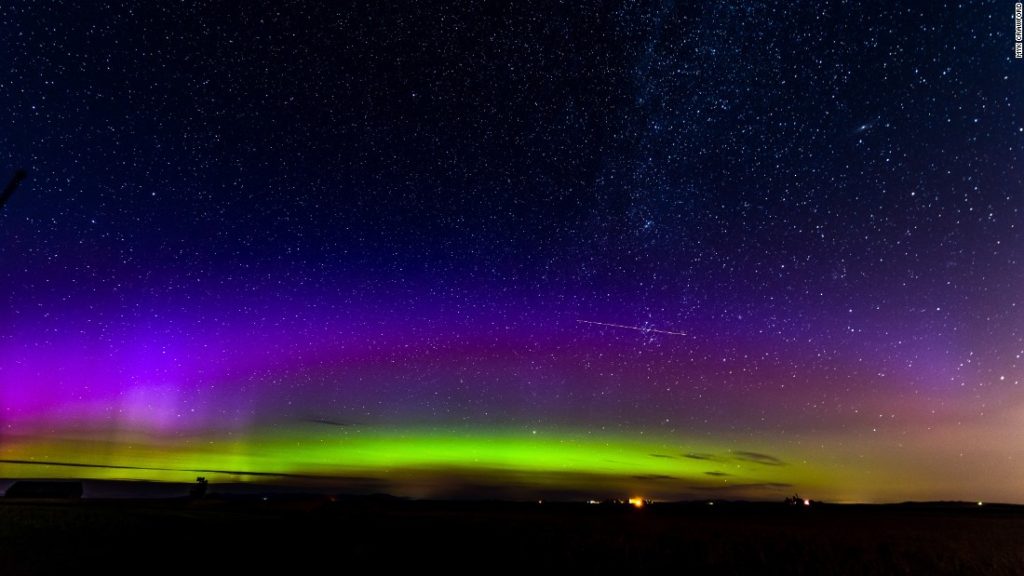Communication disruptions could come, as well.
The sun just released the equivalent of a massive solar belch, sending highly charged coronal matter across the solar system. Some of the sun’s energy will reach our atmosphere Wednesday night and Thursday, motivating stargazers to look toward the night sky in anticipation of the colorful, shimmering northern lights.
After several months of hiatus, the sun has awoken into a new period of solar activity. An impressive solar flare and Coronal Mass Ejection (CME) December 7 hurled plasma and magnetic field toward earth.
Of course, a pleasant effect of the incoming solar activity will be a dazzling display of the aurora borealis. Because of the strength of the storm, the northern lights might be visible to many who usually don’t get to see them. NOAA’s Geomagnetic Storm Index, which indicates the magnitude of the solar activity, is predicting a Kp Index of 7 (out of 9), which corresponds to aurora activity as far south as Chicago, Detroit, Boston and Seattle.
The incoming solar particles and magnetic fields released from the sun during a CME force the release of particles already trapped in the earth’s atmosphere. This triggers reactions forcing photons of light activated by oxygen and nitrogen molecules in the upper atmosphere.
The most common aurora colors are a luminescent green, but if we’re in for a bit of luck, the atmosphere could provide a range of colors from red to pink or blue to purple. Even though the forecast peak of the northern lights is for three hours starting at 10 p.m. Wednesday, some activity will be possible through December 10.
You may also like
-
UK coronavirus variant has been reported in 86 countries, WHO says
-
NASA technology can help save whale sharks says Australian marine biologist and ECOCEAN founder, Brad Norman
-
California Twentynine Palms: Explosives are missing from the nation’s largest Marine Corps base and an investigation is underway
-
Trump unhappy with his impeachment attorney’s performance, sources say
-
Lunar New Year 2021: Ushering in the Year of the Ox

